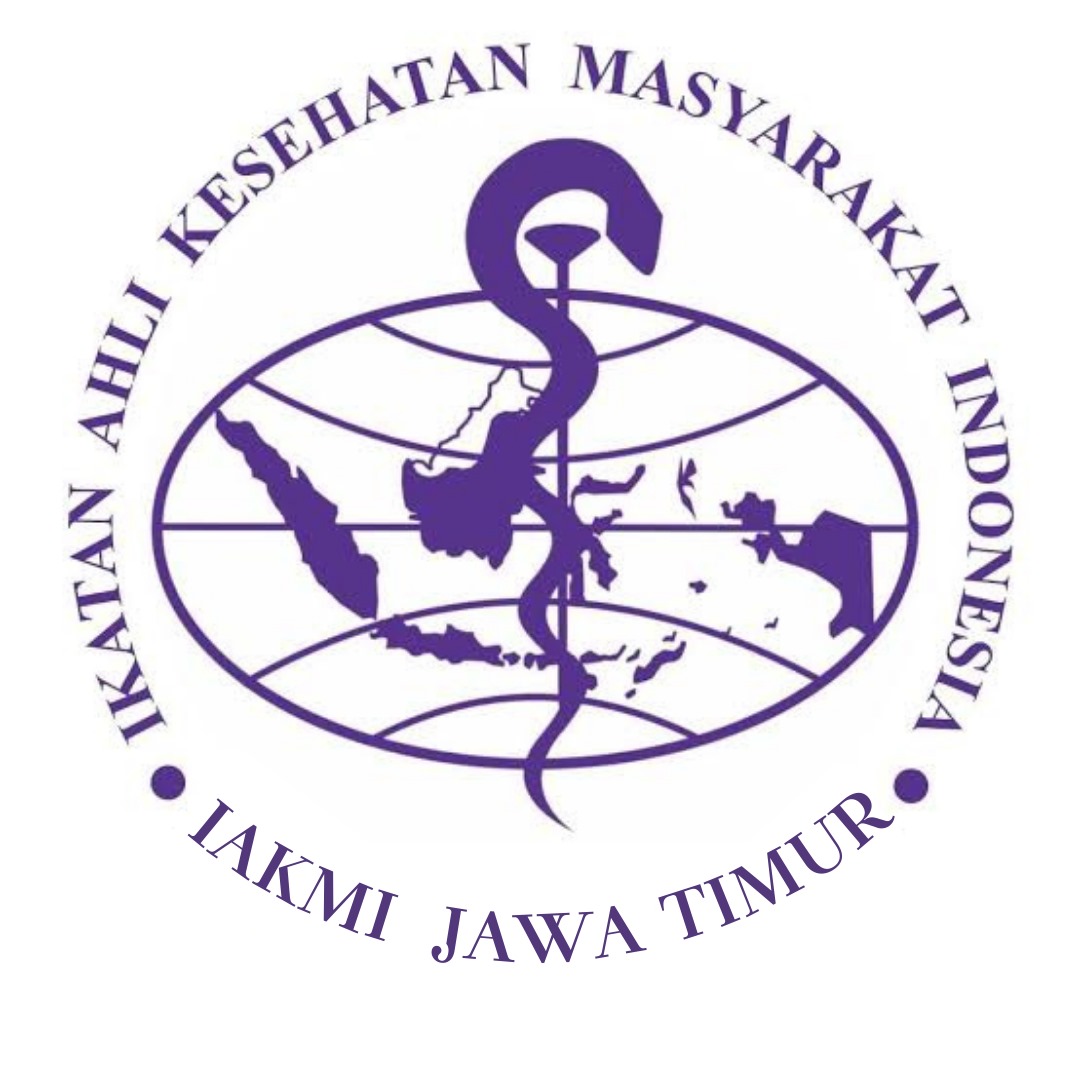Determinants of Adolescent Premarital Sexual Behavior based on the Theory of Health Belief Model (HBM)

Downloads
Background: Premarital sexual behavior refers to sexual activities conducted without the formal process of marriage, as recognized by law, religion, or belief systems. Premarital sexual behavior has become a phenomenon and a growing issue commonly encountered in society. Such behavior is feared to contribute to sexually transmitted diseases, and unwanted pregnancies, and may encourage child marriage practices. The Health Belief Model can predict individuals in making health-related decisions, including the prevention of premarital sexual behavior.
Objectives: This study aims to analyze the determinants of premarital sexual behavior among adolescents based on the Health Belief Model.
Methods: This study was descriptive quantitative research using a cross-sectional design. The sample used was 90 respondents from 10th and 11th grade students, who were randomly selected using proportional random sampling within a one-month period. Data collection with questionnaires related to premarital sexual behaviour based on Health Belief Model components in high schools in Gresik Regency. This study uses SPSS analysis with the chi-square test.
Result: The results showed that 4.4% of respondents engaged in premarital sexual behavior. The perceived severity value was p=0.005, perceived barriers value was p=0.006, perceived susceptibility (p=1.000), perceived benefits (p=1.000), perceived self-efficacy (p=0.050), and cues to action (p=1.000).
Conclusions: The study concludes that is a significant relationship between perceived severity and perceived barriers to premarital sexual behavior among adolescents. However, perceived susceptibility, perceived benefits, perceived self-efficacy, and cues to action do not have a significant relationship with premarital sexual behavior among adolescents. It is suggested that adolescents enhance their understanding of premarital sexual behavior by seeking accurate and reliable information, and by choosing friends and social environments wisely to avoid negative influences or the desire to engage in premarital sexual behavior.
Adeoye (2012) ‘Prevalence of Premarital Sex and Factors Influencing It Among Students in a Private Tertiary Institution in Nigeria’, International Journal of Psychology and Counselling, 4(1), pp. 6–9. doi: 10.5897/ijpc11.030.
Ashri Nurfurqoni, F. and Hastuti, D. (2022) ‘Pencegahan Perilaku Seksual Pra-Nikah Remaja Di Perkotaan Demi Mencetak Generasi Emas 2045’, Policy Brief Pertanian, Kelautan dan Biosains Tropika, 4(4). doi: 10.29244/agro-maritim.v4.i4.18.
Assarzadeh, R., Khalesi, Z. B. and Jafarzadeh-Kenarsari, F. (2019) ‘Sexual Self-Efficacy and Associated Factors: A Review’, Shiraz E Medical Journal, 20(11). doi: 10.5812/semj.87537.
Azwar, S. (2008) Realibilitas dan Validitas. Yogyakarta: Pustaka Pelajar.
Dewi, P. S. and Lestari, M. D. (2020) ‘Hubungan Konformitas Teman Sebaya dan Konsep Diri terhadap Perilaku Seksual Pranikah Remaja Madya di Kabupaten Bangli’, Jurnal Psikologi Udayana, 02(1), pp. 77–87. Available at: https://ojs.unud.ac.id/index.php/psikologi/article/download/57791/33727.
Dhiozandi, H. (2020) ‘Peran Persepsi Orangtua dalam Menerapkan Pendidikan Seksualitas kepada Anak Usia 9-12 Tahun di SD X’, Jurnal Perkotaan, 11(2), pp. 119–134. doi: 10.25170/perkotaan.v11i2.948.
Fitriani, Y., Pristianty, L. and Hermansyah, A. (2019) ‘Pendekatan Health Belief Model (HBM) untuk Menganalisis Kepatuhan Pasien Diabetes Melitus Tipe 2 dalam Menggunakan Insulin’, PHARMACY: Jurnal Farmasi Indonesia (Pharmaceutical Journal of Indonesia), 16(2), p. 167. doi: 10.30595/pharmacy.v16i2.5427.
Glanz, K., Rimer, B. K. and Viswanth, K. (eds) (2015) ‘Health Behavior: Theory, Research, and Practice’, in. San Francisco: Jossey-Bass. doi: 10.1016/B978-0-12-818697-8.00060-1.
Kementrian Kesehatan RI (2018) Survei Demografi dan Kesehatan Indonesia Tahun 2017.
Kustin, K. and Handayanio, Y. (2024) ‘Health Belief Model Sebagai Upaya Pencegahan Perilaku Seks Bebas pada Remaja’, ARTERI : Jurnal Ilmu Kesehatan, 5(3), pp. 40–47. doi: doi.org/10.37148/arteri.v5i3.406.
Mahendra, D., Jaya, I. M. M. and Lumban, A. M. R. (2019) Buku Ajar Promosi Kesehatan, Program Studi Diploma Tiga Keperawatan Fakultas Vokasi UKI.
Menteri Kesehatan Republik Indonesia (2014) Peraturan Menteri Kesehatan Republik Indonesia Nomor 25 Tahun 2014 Tentang Upaya Kesehatan Anak.
Mindayani, S. and Hidayat, H. (2019) ‘Analisis Perilaku Pencegahan Penularan HIV/AIDS dengan Pendekatan Health Belief Model (HBM) pada WBP di Lapas Kelas IIA Padang’, Jurnal Kesehatan, 7621(1), pp. 33–43. doi: 10.23917/jk.v0i1.7578.
Ningrum, P. (2022) ‘The Risk Sexual Behavior of Adolescents Reviewed Based on Health Belief Model’, JNKI (Jurnal Ners dan Kebidanan Indonesia) (Indonesian Journal of Nursing and Midwifery), 9(4), p. 280. doi: 10.21927/jnki.2021.9(4).280-289.
Qisthi, D., Bahri, T. S. and Safuni, N. (2023) ‘The Correlation between Health Belief and Compliance Behavior among Patients with Chronic Kidney Disease Receiving Hemodialysis’, Jurnal Ilmiah Mahasiswa, VII(3), pp. 45–53. doi: 2716-3555.
Soetjiningsih (2004) Tumbuh Kembang Remaja dan Perkembangannya. Jakarta: Sagung Seto.
Valizadeh, R. et al. (2016) ‘The Effect of Puberty Health Education Based on Health Belief Model on Health Behaviors and Preventive Among Teen Boys in Marivan, North West of Iran’, International Journal of Pediatrics, 4(8), pp. 3271–3281. doi: 10.22038/ijp.2016.7167.
Winarni, W. (2017) ‘Efikasi Diri dan Perilaku Seksual Pranikah Remaja SMA’, Gaster, 15(2), p. 232. doi: 10.30787/gaster.v15i2.209.
World Health Organization (2007) Orientation Programme on Adolescent Helath for Helath-care Providers. Available at: https://www.who.int/maternal_child_adolescent/documents/pdfs/9241591269_op_handout.pdf.
Yakubu, I. et al. (2019) ‘Assessing the Impact of an Educational Intervention Program on Sexual Abstinence Based on the Health Belief Model amongst Adolescent Girls in Northern Ghana, a Cluster Randomised Control Trial’, Reproductive Health, 16(1), pp. 1–13. doi: 10.1186/s12978-019-0784-8.
Copyright (c) 2024 Laila Hidayah Santoso

This work is licensed under a Creative Commons Attribution-ShareAlike 4.0 International License.
Media Gizi Kesmas by Unair is licensed under a Creative Commons Attribution-ShareAlike 4.0 International License.
1. The journal allows the author(s) to hold the copyright and to retain the publishing right of the article without restrictions.
2. The legal formal aspect of journal publication accessibility refers to Creative Commons Attribution-Share-Alike (CC BY-SA).
3. The Creative Commons Attribution-Share-Alike (CC BY-SA) license allows re-distribution and re-use of a licensed work on the conditions that the creator is appropriately credited and that any derivative work is made available under "the same, similar or a compatible license”. Other than the conditions mentioned above, the editorial board is not responsible for copyright violations.



















